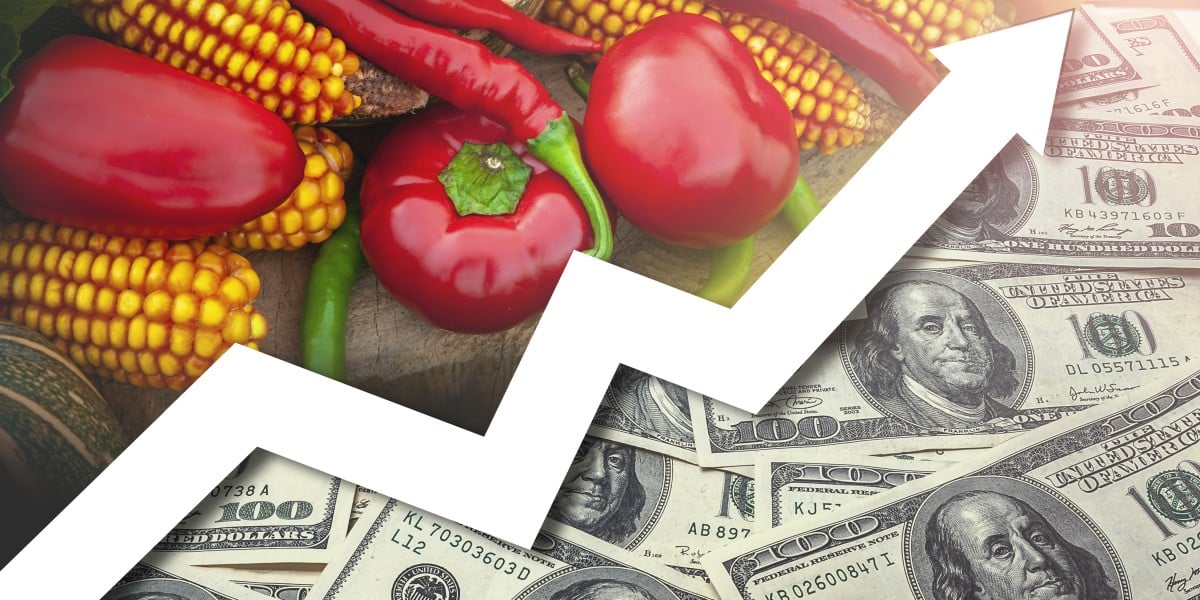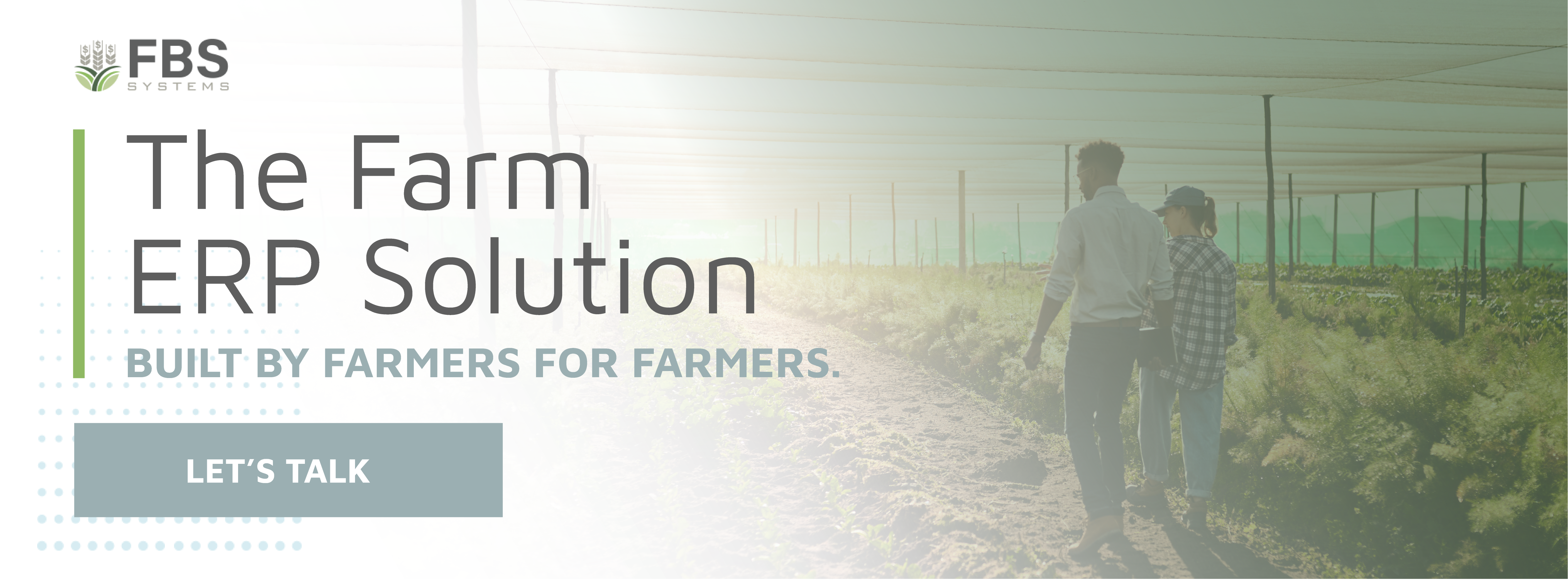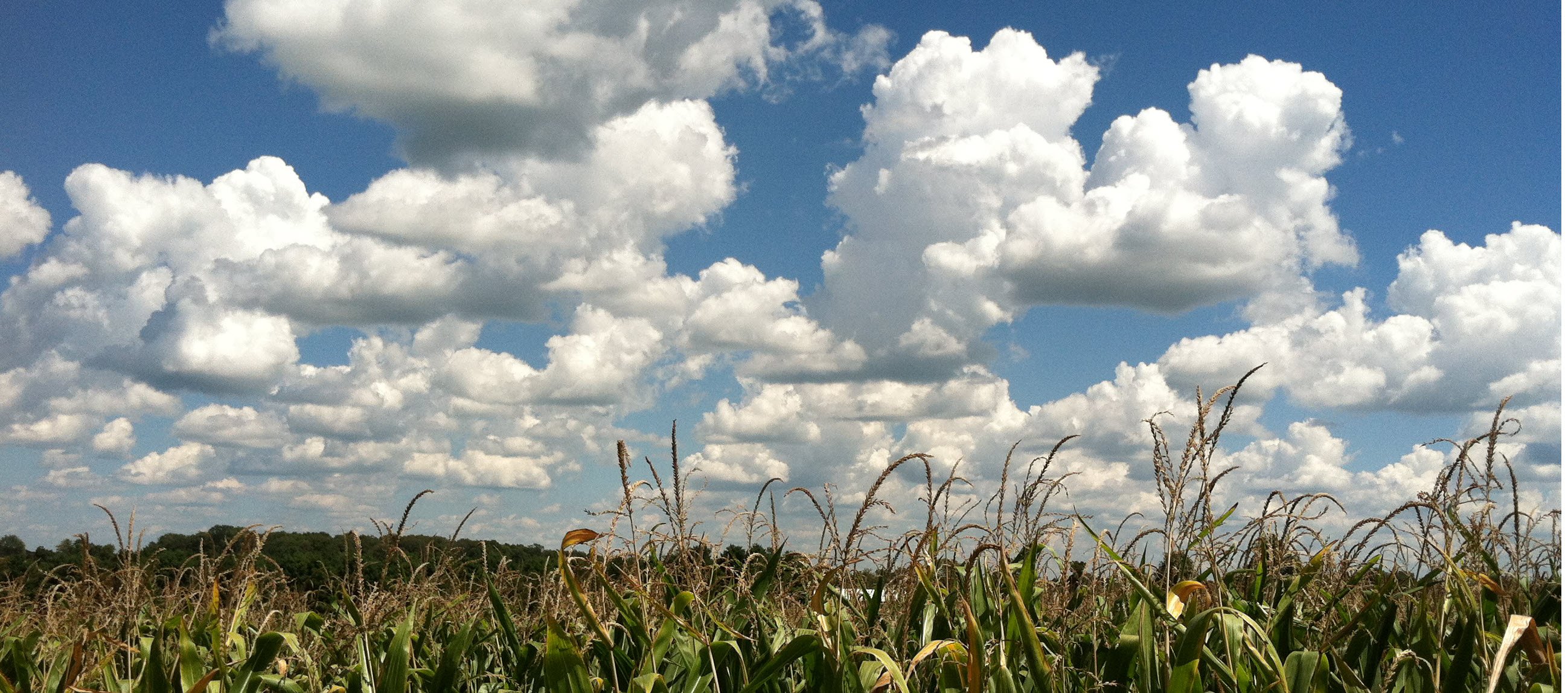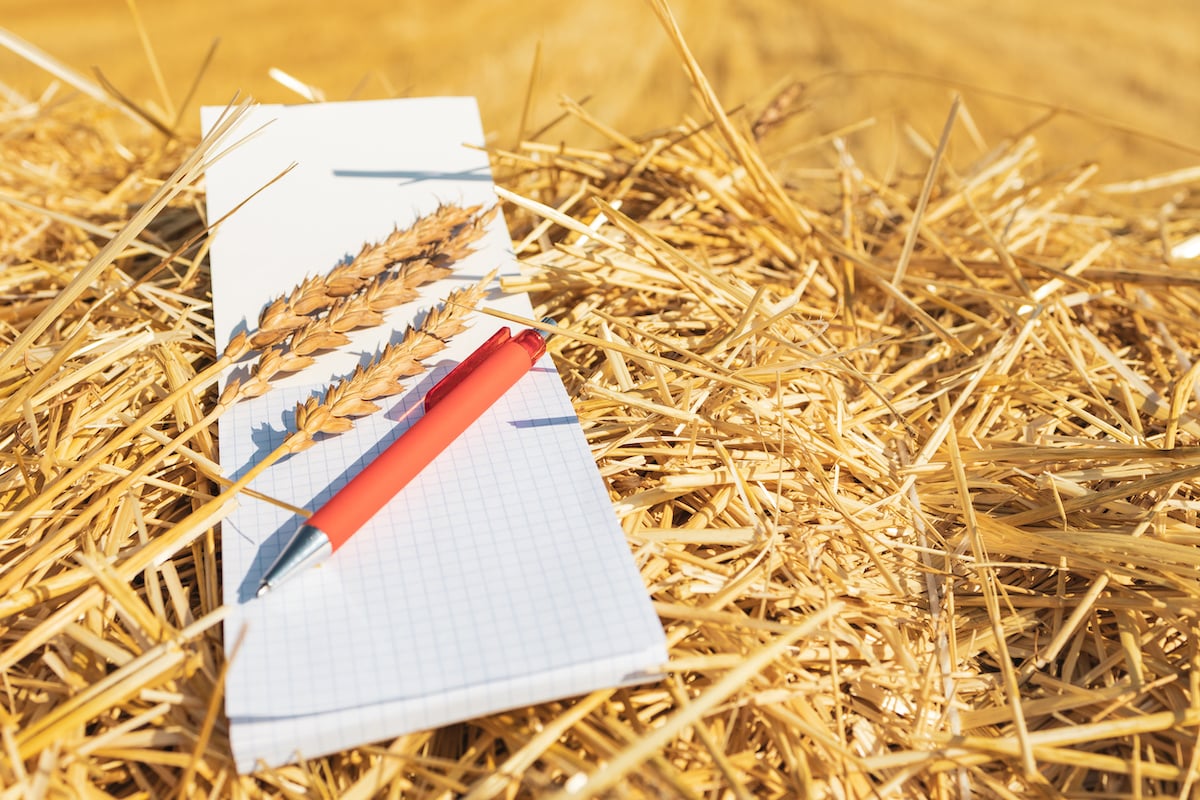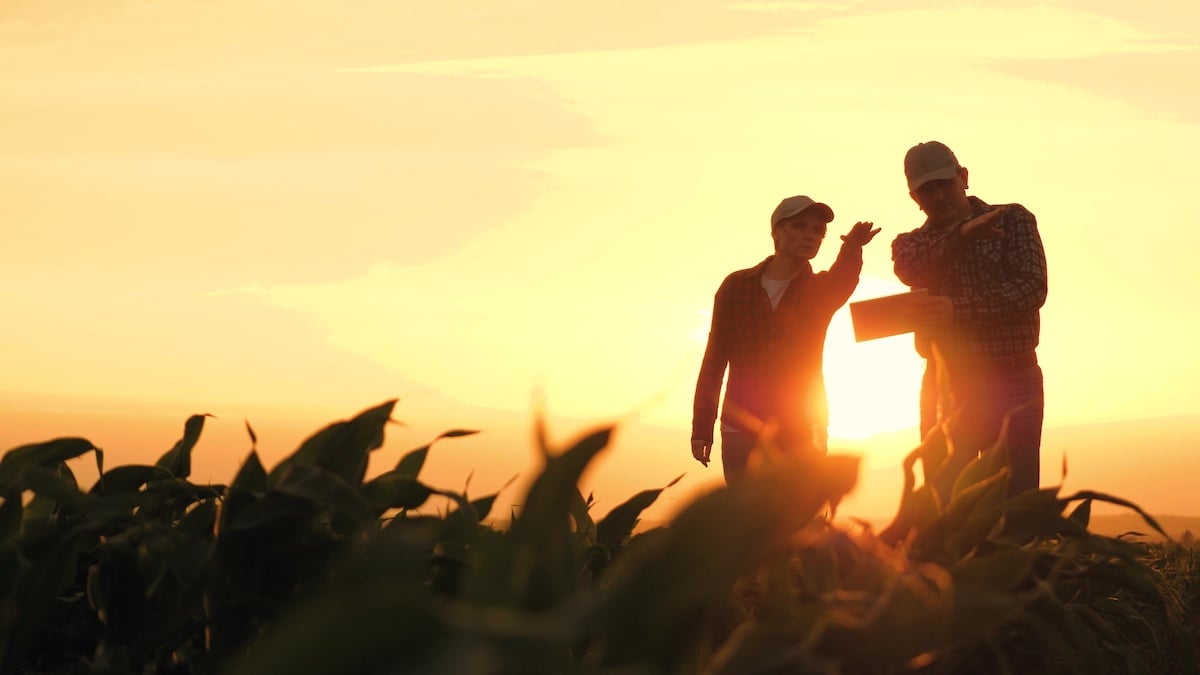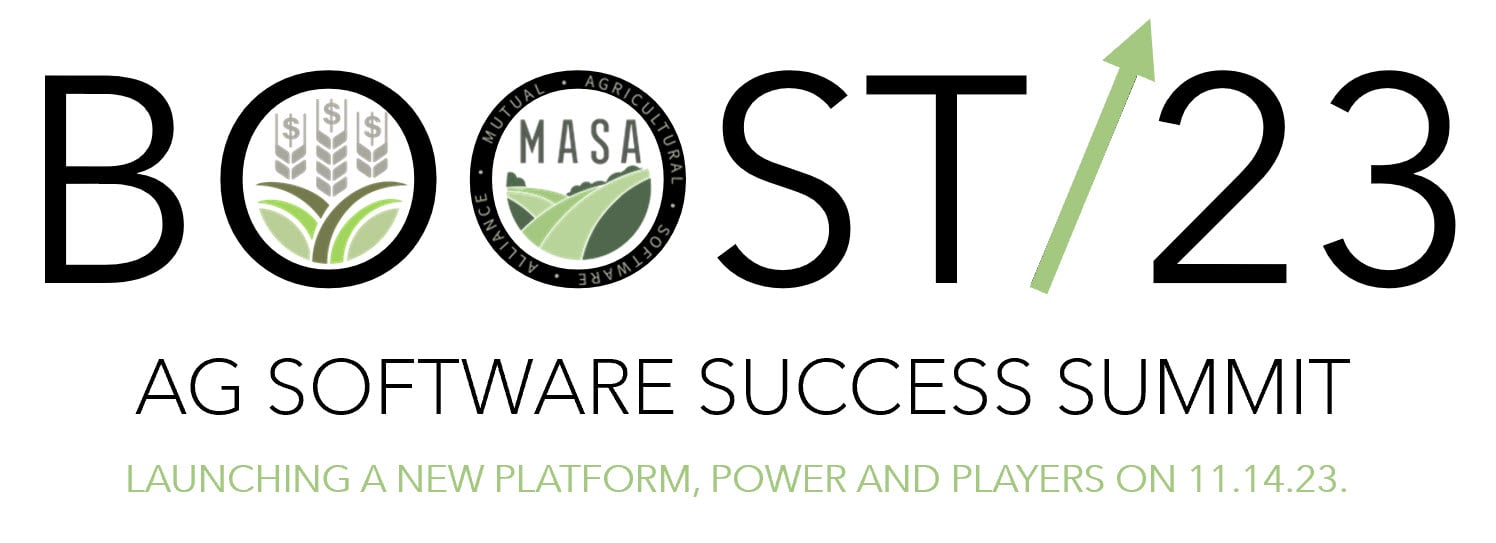When approaching a loan officer for a farm loan, that loan officer may want the farmer to provide a metric ton (figuratively speaking) of paperwork proving the viability of their farming enterprise mix. Why? Because, the lending institution needs affirmation that the loan will be repaid in a timely manner.
However, many farmers might struggle with providing the kind of farm cash flow planning documents that lenders want to see. Whether farmers come up with incorrect numbers (because of a lack of visibility into their cost and profit centers), don’t know what numbers the lender wants to see, or don’t have the right kind of accounting records needed to smoothly translate their farm business plan into a banker-oriented cash flow plan, the end result is that they struggle to get the farming business loan they need to cover their immediate costs and carry through to the day when they get paid for all of the work they’ve done.
This is where whole farm financial planning and creating farm cash flow projections can be an enormous help. While creating a whole farm financial plan that includes cash flow projections will likely go beyond most lenders’ minimum requirements, there are benefits to this task that can help your farming business outside of qualifying for loans.
Here are a few tips to help you start your farm cash flow and engage in “whole farm” financial planning:
Gathering Data for Your Cash Flow Planning
The first step in preparing any kind of report or document about your farm finances is to gather the relevant data. A good place to start is with your previous few years’ balance sheets. At a minimum, last year’s balance sheet should provide valuable information, but having multiple years’ balance sheets is better.
Some of the information you can pull from your prior balance sheets to help in your cash flow planning include:
- Liquid Asset Balances. Savings accounts, accounts receivable, and other “liquid” assets are easily used to pay for goods and services. If received, any FSA payments should also be included, as well as contracted or hedged commodity sales.
- Intermediate and Fixed Assets. While intermediate and fixed assets aren’t part of your cash flow per se (since they can’t be easily liquidated), they are an important part of your farm's financial planning. This asset category can include items like any machinery on your farm (tractors, trucks, field equipment, etc.), buildings, and even the land you own. Why are these non-liquid assets important for your whole farm financial plan? Because, they can have an impact on your farming business’ valuation and your future operational plans (including capital improvements, repair costs, and productivity adjustments).
- Current Inventory Levels. How much livestock, crops, and supplies does your farming operation have on hand? Your most recent balance sheet should give you a starting point for your inventory levels—though this will need to be adjusted based on inventory consumption through use, sale, or loss throughout the year. Having your current inventory level is critical for establishing cash flow projections as inventory can have a direct impact on sales and productivity.
- Outstanding Liabilities. How much do you owe to your creditors, employees, and vendors? Your previous year’s balance sheet should have a list of your accounts payable, operating notes, and mortgages. This helps you know what your outstanding liabilities are and when they’ll come due—which is critical for accurate farm cash flow planning. This information, when combined with expected income projections, can also help you better establish exactly how much loan you’ll need to cover your operating expenses and when you’ll be able to pay back your loans.
Note that your planning period should begin with the day after the date on your most recent balance sheet. So, if you plan annually (i.e., from January 1 to December 31), your cash flow planning documents should start on January 1. If you start and end on any other month/day, it would need to start on the next day. For example, if your balance sheet ends on March 31, then your cash flow planning period should start on April 1.
Another important thing to note is the difference between your fixed costs and your variable costs. Fixed costs are costs that remain the same regardless of your level of production. Variable costs will scale depending on your productivity.
Fixed costs typically include the DIRTI 5 (Depreciation, Interest, Repairs/Rent, Taxes, and Insurance). Variable costs include things like labor, seed costs, feed, fertilizer, and fuel. In your data collection, it’s important to remember that only fixed costs will be consistent from year-to-year (and thus, easy to project).
Variable costs may change from year-to-year, making them harder to accurately project based solely on past consumption data. If your production plans change, then your estimates for variable costs will need to change as well.
Setting Up Your Enterprise Budget
After collecting previous years’ data, it’s time to start making your farm enterprise budget. Why a budget detailing the expenses and revenue generation of each enterprise in your farming business? Because that gives you the most detailed view of your profitability and may even prove useful in adjusting your enterprise mix to maximize revenue while minimizing costs.
For each enterprise in your farm, create the following:
An Enterprise Production Plan
Most farmers are highly proficient at production planning; unfortunately, that’s as far as many ever get without some support or specialized farm accounting tool. To produce accurate and detailed financial projections to accompany these enterprise production plans, it’s important to:
Gather as Much Verifiable Information on Your Production Centers as Possible
While looking at previous balance sheets is a good start for financial planning data collection, creating accurate financial projections requires data on your production capabilities. Begin by collecting information about production centers such as acres available (or permitted) for each enterprise, acreage already planted or fertilized, livestock facility capacities, breeding records and yield and performance histories.
Develop a Crop Plan
For each of your agricultural enterprises, go over each field and determine:
- Crop or crops to be grown
- Estimated yields
- Seeds, chemicals and fertilizers to be used
- Application rates per acre.
Using application units (pints, quarts, pounds, kernels, etc.) rather than the bulk units in which these materials are purchased can help to improve accuracy and planning simplicity—easing the burden of creating an enterprise budget for your crops.
Develop a Livestock Plan
If you raise or feed livestock, you will need to document the following:
- Beginning inventory numbers and weights for each class of livestock (from the prior year’s balance sheet)
- Numbers, dates and weights of animals to be sold
- Numbers, dates and weights of animals to be purchased
- Numbers, dates and weights of animals to be raised
- Numbers, dates and weights of estimated death loss
- Dates, quantities and weights of animal product (eggs, milk, etc.) to be sold
- Ending inventory numbers and weights for each class of livestock.
When creating this document, it’s important to check that your projected ending inventories are balanced against productions, death losses, purchases, and sales of your livestock.
Develop a Feed Consumption Plan
If you feed livestock, you must calculate:
- Expected feed conversion or daily feed consumption
- Type and quantity of commercial feed to be consumed
- Type and quantity of grain and forage to be consumed
- How much of each feed is available from beginning inventories (from the prior year’s balance sheet)
- How much and when new crop will be available (from your crop production plan)
Comparing current feed inventory to consumption plans can also help you determine how much feed to purchase for your livestock enterprise to maintain planned production levels.

The Unit Budget
While the production plan tells you where production takes place, what’s being produced, and how much, the unit budget incorporates price information. As part of your unit budget, you should incorporate:
Crop Input Unit Costs
The crop production plan should have summarized the total quantity of each type of fertilizer, seed and chemical needed. Now you should determine:
- What percentage of these expenses are “your share” (for crop share leases)
- What price you will be paying per unit for each item
The units used here are purchase units (gallons, bags or tons). Your farm accounting software should convert the “application units” from the production plan into these purchase units.
It’s important to use solid data as much as possible. It can also help to call multiple suppliers for price quotes and trends to help you better estimate costs.
Crop/Feed Purchases and Sales
Since you’ve already created a feed plan, you should already know how much feed you’ll need to meet your production goals—the same should go for crop production (and especially feed crop production, if you grow your own feed). To establish a crop and feed budget, it’s important to assign prices for your:
- Monthly crop or feed purchase
- Monthly crop or feed sales
- Ending inventories of crops and feeds
Creating accurate crop and feed cost projections will be easier if you’ve already contracted or hedged some of that crop or feed.
Livestock Purchases or Sales
Since you have a livestock production plan in place already, it’s time to assign a price per unit (per head or per pound) for:
- Monthly livestock purchases
- Monthly livestock sales
- Monthly livestock product sales
- Ending livestock inventories
As with crops and feed, it can help to enter unit prices from any contracted or hedged contracts so you can rely on “known” values rather than specious estimates.
Adding Variable Costs
The last phase of the process merges the remaining variable costs (such as fuel, fertilizer, and labor) into the production budget.
If your enterprise mix, practices and production levels remain constant from year-to-year, then you may be able to handle variable costs in a manner similar to fixed costs. However, it’s important to note that market conditions may cause unexpected cost variances even if your operations remain largely stable.
If you plan to change your farm enterprise mix, implement new practices/equipment, or increase production levels, you’ll need to change your variable cost assumptions—and conduct additional market research.
Past farm accounting data can serve as a solid basis for these cost assumptions. However, it’s important to remember that production levels and costs don’t always match on a 1:1 scale. Some farm enterprises may realize greater efficiencies at certain production levels because of bulk resource purchases, the ability to use a set number of farm machines to achieve production, or other factors. The opposite may also be true. Hitting a certain level of production may also create a large cost increase as new equipment or land needs to be added to achieve farm production goals.
If you start an entirely new enterprise or don’t have sufficient historical data to create accurate estimates, then it might help to reach out to a farming association or to a state or county extension office (you can find a list of links to extension offices for different states here).
The Completed Enterprise Budget
The enterprise budget is a process that uses the information you’ve collected to systematically prepare:
- Operating (production) plans
- Purchasing plans
- Marketing plans
- “Breakeven” budgets by production center
The next step is to assemble all of these known facts and assumptions into a Total Farm Budget so you can create your farm cash flow plan.
Creating a "Total Farm" Budget
A total farm budget spreads your income and expenses from each enterprise center across a 12-month period while incorporating any non-farm expenses and receipts, capital investments, and financing.
Calendarizing Annual Budgets into Monthly Ones
If you have a farm accounting software solution, the task of arranging your annual farm budget into distinct monthly budgets should be a relatively simple task. However, when calendarizing your budget, be sure to include dates with each of your budgeting components to make as granular and reliable a budget as possible.
Budgeting components to record include:
- The prior year’s accounts payable and receivable
- Principal payments on existing debts
- Purchases and/or sales of crops, livestock, feed, and materials
- Variable costs (labor, maintenance, etc.)
- Non-farm expenses
- Fixed costs
Of these, the principal debt payments and fixed costs will likely be the easiest to accurately estimate and plot on a monthly calendar basis.
Create Your Non-Farm, Capital Investment, and Financing Plan
When creating a comprehensive financial plan for your farm, it’s important to consider non-farm, capital investment, and financing.
Non-farm costs typically include things like your outside wages and investments (i.e., those not related to your farm) and your family’s living withdrawals.
Capital investments include items like your savings account, hedging account deposits and withdrawals, and the purchase or sale of any lands, buildings, and machinery your farm might use.
Financing is pretty much what you’d expect—the loans and new operating notes you use for various purposes on your farm.
Financing and capital investments are often closely related since many farm loans are used to make capital investments like purchasing new land or equipment for the farm to boost productivity (and thus, profitability).
To incorporate your farm financing and capital investment plans into your budget, you can:
- Plug your projected hedging account deposits into your budget.
- Enter anticipated hedging account withdrawals for months where you plan to close futures contracts.
- Enter projected purchases or sales of capital items like land or farming machinery.
- Add your non-farm expenses and receipts.
- Check your projected ending cash balance for each month you’re planning your farm cash flow for.
- If your balance is negative for any month, you will need to find ways to reduce costs or add capital. Some common methods of doing this include:
- Delaying/canceling capital purchases.
- Financing capital purchases instead of buying outright.
- Downscaling production to limit variable costs.
- Borrowing operating funds.
- Postponing non-farm withdrawals/expenses.
- If the balance is positive for any month, consider how that positive balance may be applied to increase farm profitability or to accelerate the payoff of outstanding debts. If paying off debt, it’s helpful to focus on the largest debts with the highest interest rates first, as that can help mitigate the total amount of interest you pay.
- Repeat steps 5-7 until you’re satisfied with the results for every month you’re planning your farm cash flow.
Analyzing and Adjusting Your Farm Budget for Healthy Cash Flow
While creating a plan is always a good idea, even the best-laid plans using the most reliable information may not match up to the reality of your farming operation. For example, droughts, hurricanes, global supply chain disruptions, product boycotts, and other unanticipated events can all throw off your projected expenses or income.
Naturally, this means monitoring your farm budget and making changes to the plan as you go so you can maintain a healthy cash flow.
Some record types to keep track of to analyze your ongoing cash flow and farm’s operational health include:
- Cash and Accrual Accounting Records. Do you track your farm financial records on a cash basis or an accrual basis? Trick question, you should be doing both. This can help you determine why your revenue and expenses are varying from projections as well as the actual current financial condition of your farming business.
- Production Records. Verify that your production schedule is on track to meet projected goals and that your yield and market price assumptions remain viable. Also, check to verify that supplies needed for production were consumed at or close to the projected rate.
- Inventory Records. Do you have crop left to sell? How much of next year’s crop is left to price? When will livestock inventories be ready for market? What quantity of needed supplies are currently on hand or booked? Verify this information frequently so you can make inventory adjustments as needed.
- Enterprise Records. Unit costs are affected by production events and inventory positions as well as cash receipts and expenses. So, it’s important to verify that the costs of production for each of your farming enterprises have tracked with your initial projections.
- Ownership Records. Are there any outstanding balances owed or receivable on the books? If so, who owns that debt or owes you that money? Ownership records can help you keep track of your accounts payable and receivable—which is vital for improving cash flow by collecting on debts so you can avoid penalties for late payments to your creditors.
Once this known information is in hand, you can begin to deal effectively with the unexpected situations that may derail your carefully-calculated farm cash flow projection.
Need help getting your farm’s cash flow plan put together? Reach out to FBS Systems today to demo our integrated farm accounting and enterprise resource planning (ERP) solutions. Our agricultural industry-specific software helps farmers across the country keep better track of their crop and livestock expenses and revenue to create a better business plan.

